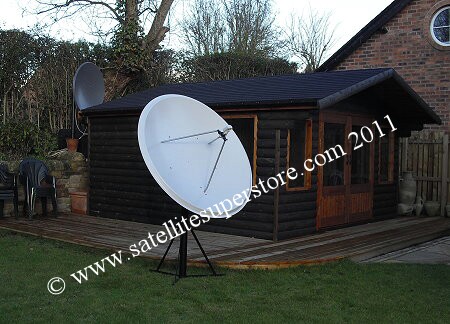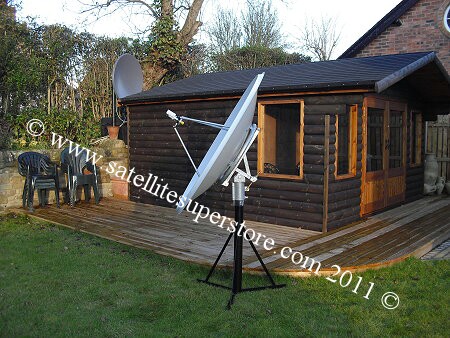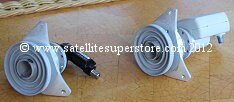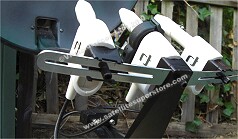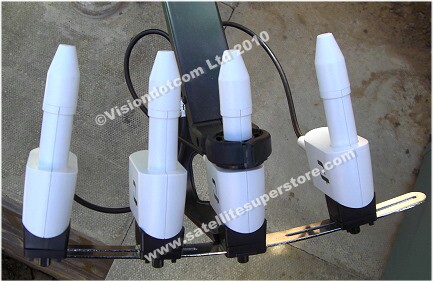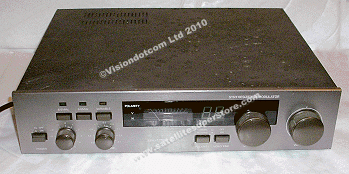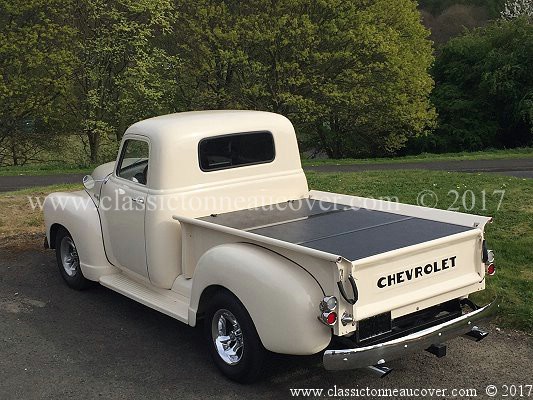What is an LNB ?
An LNB is the box of electronics on the end of the dish boom arm. It acts like a aerial masthead
amplifier. The signal (microwaves) reflect off the dish and into the feedhorn to the LNB.
Here it is amplified and the frequency is lowered. The lower the noise figure the better.
i.e. in simple terms, it pulls in the signal better. The signal is then sent down the coaxial cable to the
satellite receiver. Quality digital cable should be used. (not CT100 or RG6)
See our
Satellite Cable for good digital cable.
A universal LNB covers the KU band from 10700 to 12750Ghz with LO frequencies of 9750 and 10600.
There are
Single LNBs, Twin
LNBs, Quad LNBs, Octo
LNBs and
Quatro LNBs. Single have one output,
twin - two outputs, quad - 4 outputs and Octo - 8 outputs. All outputs are the same and are equivalent to
a single LNB. A twin LNB could be used for two single tuner satellite receivers or a twin tuner satellite receiver
Quatro LNBs have 4 outputs and they are all different. Quatro LNBs can only be used with
multiswitches.
There are also 40mm clamp LNBs and C120 LNBs. This refers to the way they fit on a dish. A 40mm LNB has an
integral offset feedhorn and fits to the most common types of offset dishes.
C120 flange LNBs fit on a separate feedhorn and could be used on either offset or prime focus dishes.
They are usually used on specialist high quality dishes.
Both 40mm and C120 LNBs could have single, twin, quad or quatro outputs.
At the moment only 40mm LNBs have octo outputs.
Using a quatro LNB and a multiswitch it is posible to have many more outputs. Even 32 outputs or larger.
A
Sky mini dish LNB uses a fixing that is none standard and a tongue fits into the end of the boom
arm
To find out more about LNBs and how the perform go to
Getting More Signal.
Prime Focus and Offset Dishes.
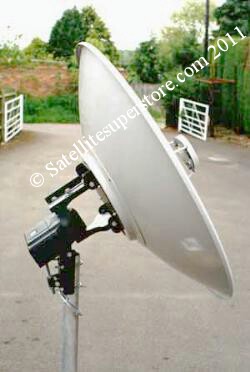
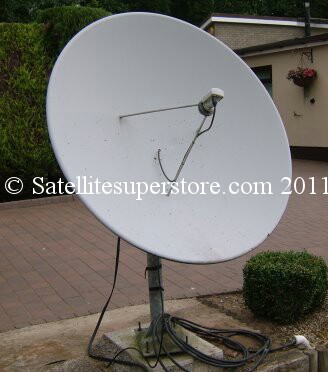
A 1.2m prime focus dish is shown above.
This type of dish is circular NOT oval. It has 3 feed support arms (some use 4 arms) and the 3 arms
converge in the centre. Each arm is 120 degrees apart. The feedhorn uses concentric scalar rings.
The concentric scalar rings reduce noise and improve signal to noise ratio with prime focus dishes.
An offset dish (See below) is oval and is higher than it is wide (some are wider than they are high).
They use either one feed support arm (at the bottom of the dish - see bottom left hand picture) or 3
feed support arms (again all in the bottom 1/2 of the dish - see bottom right hand picture).
Many offset dishes use a standard 40mm clamp LNB but some more expensive specialised offset dishes
also use a feedhorn If a feedhorn is used, a c120 flange LNB is bolted to it.
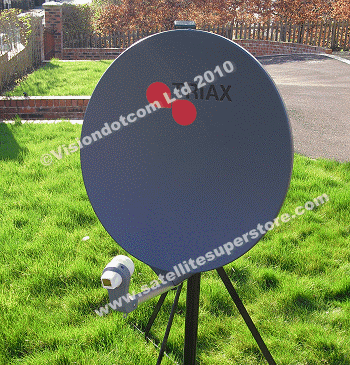

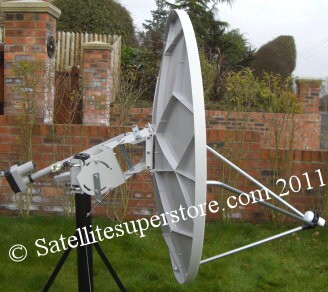
As a general rule the two types of dishes are simply two ways of doing the same job, however, an offset
dish, if well engineered, usually has significantly more gain than the prime focus dish. It is never
really that simple. It is true that petalised offset dishes usually have poor gain but a one-piece
well engineered prime focus dish can be better than a poorly engineered offset dish and some very
good prime focus dishes can have the same gain as a good offset dish of the same size.
As usual you get what you pay for. Cheap prime focus petalised dishes are to be
avoided and we don't sell them.
Prime focus dishes probably look better than offset dishes as they point upwards.
Update Feb. 2011 -
See our new 1.4m prime focus dishes at
fixed 1.4m prime focus dish and
motorised 1.4m prime focus dish
These prime focus dishes wll soon be available with C Band LNB options using the products on this page.
